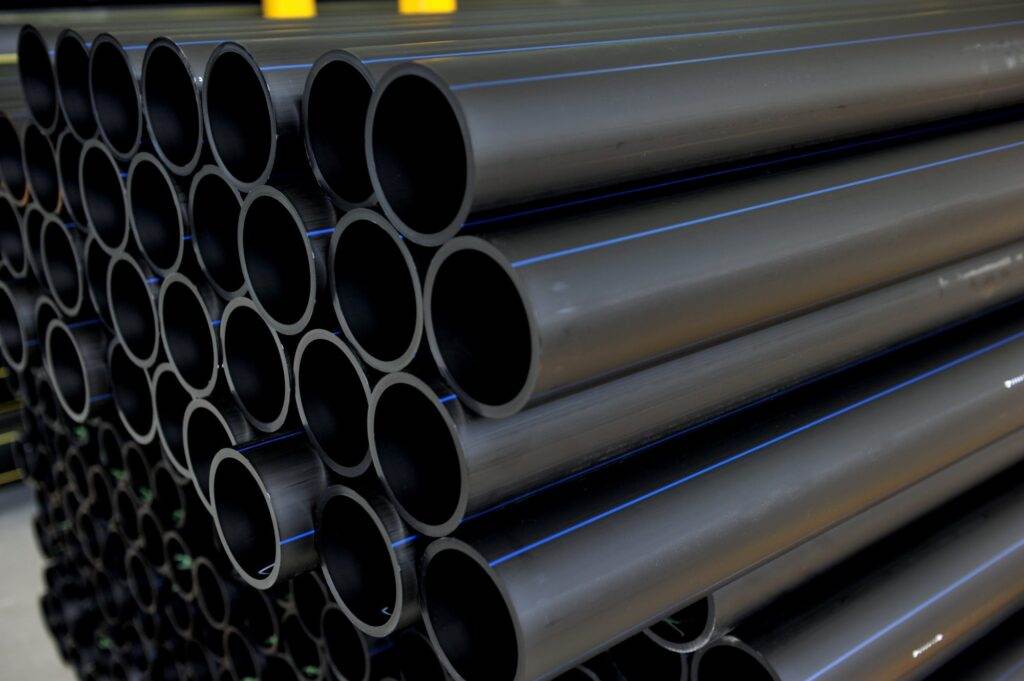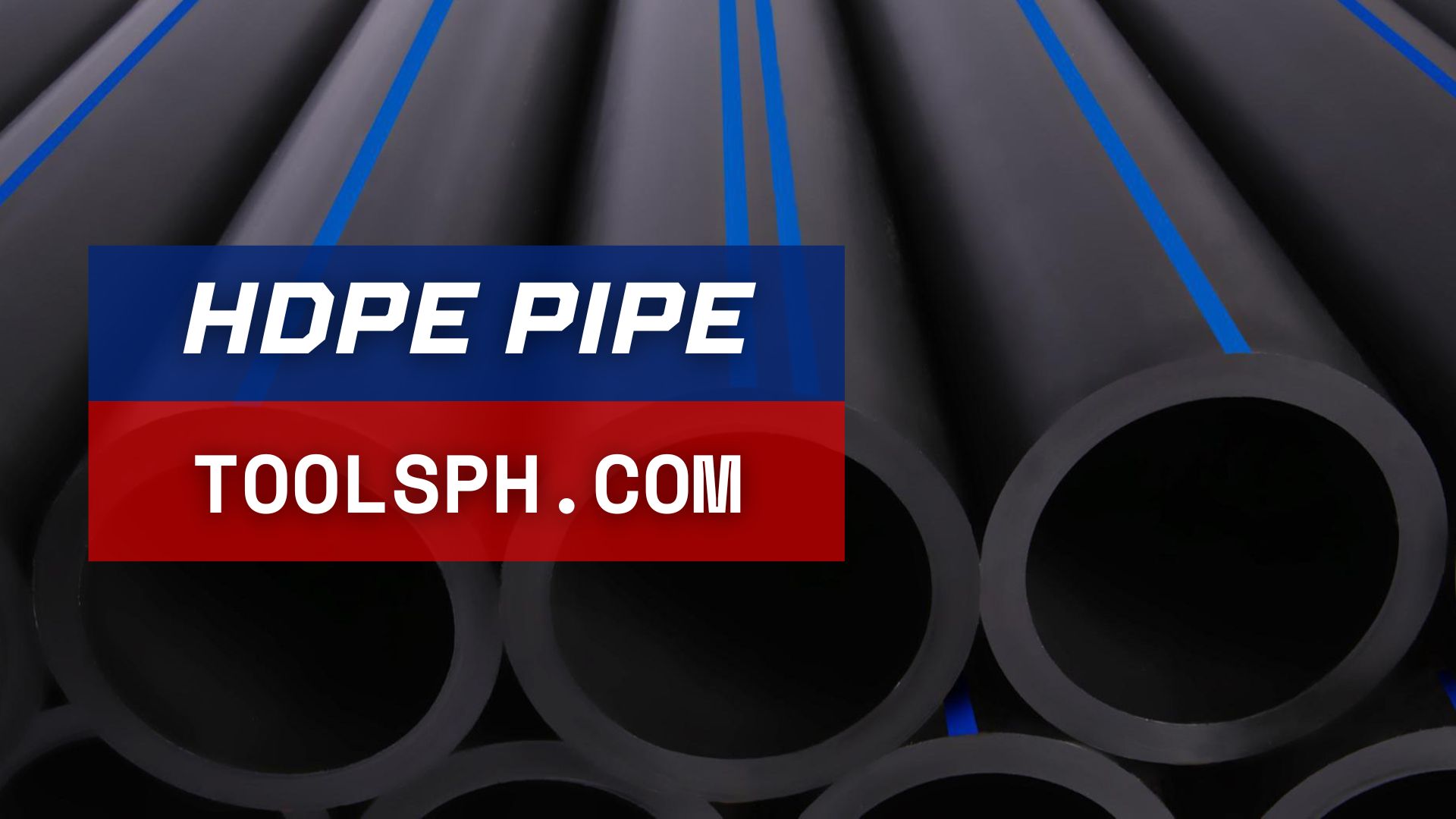HDPE Pipe is a type of thermoplastic pipe made from high-density polyethylene resin, known for its strength, durability, flexibility, and resistance to corrosion and chemicals. It is a versatile and reliable piping material that numerous advantages which is why it is widely used in various industries and applications, but mostly for conveying fluids, gases, and slurries. Although the HDPE pipe has a higher initial price compared to other alternatives, its longevity and durability can offset it in the long run.
HDPE Pipe Prices
HDPE Pipe’s prices can vary depending on the material, diameter, and size. On average, their price ranges from ₱25.00 to ₱21,442.00.
| Item No. | Diameter / Size | Unit Price per Meter | ||||
| SDR9 / PN20 | SDR11 / PN16 | SDR13.6 / PN12.5 | SDR17 / PN10 | SDR21 / PN8 | ||
| 1 | HDPE PIPE, PE100, DN20 (1/2″) | ₱36.00 | ₱28.00 | ₱25.00 | ||
| 2 | HDPE PIPE, PE100, DN25 (3/4″) | ₱54.00 | ₱43.00 | ₱35.00 | ₱30.00 | |
| 3 | HDPE PIPE, PE100, DN32 (1″) | ₱89.00 | ₱71.00 | ₱58.00 | ₱45.00 | ₱40.00 |
| 4 | HDPE PIPE, PE100, DN40 (1-1/4″) | ₱137.00 | ₱111.00 | ₱90.00 | ₱72.00 | ₱57.00 |
| 5 | HDPE PIPE, PE100, DN50 (1-1/2″) | ₱213.00 | ₱174.00 | ₱140.00 | ₱112.00 | ₱89.00 |
| 6 | HDPE PIPE, PE100, DN63 (2″) | ₱329.00 | ₱277.00 | ₱222.00 | ₱179.00 | ₱141.00 |
| 7 | HDPE PIPE, PE100, DN75 (2-1/2″) | ₱481.00 | ₱378.00 | ₱299.00 | ₱248.00 | ₱203.00 |
| 8 | HDPE PIPE, PE100, DN90 (3″) | ₱684.00 | ₱554.00 | ₱448.00 | ₱372.00 | ₱297.00 |
| 9 | HDPE PIPE, PE100, DN110 (4″) | ₱1,038.00 | ₱830.00 | ₱672.00 | ₱545.00 | ₱445.00 |
| 10 | HDPE PIPE, PE100, DN160 (6″) | ₱2,176.00 | ₱1,761.00 | ₱1,418.00 | ₱1,140 | ₱915.00 |
| 11 | HDPE PIPE, PE100, DN225 (8″) | ₱4,276.00 | ₱3,471.00 | ₱2,785.00 | ₱2,229.00 | ₱1,829.00 |
| 12 | HDPE PIPE, PE100, DN280 (10″) | ₱8,318.00 | ₱6,696.00 | ₱5,376.00 | ₱4,303.00 | ₱3,522.00 |
| 13 | HDPE PIPE, PE100, DN315 (12″) | ₱10,532.00 | ₱8,487.00 | ₱6,806.00 | ₱5,479.00 | ₱4,418.00 |
| 14 | HDPE PIPE, PE100, DN355 (14″) | ₱13,346.00 | ₱10,782.00 | ₱8,639.00 | ₱6,965.00 | ₱5,623.00 |
| 15 | HDPE PIPE, PE100, DN400 (16″) | ₱16,951.00 | ₱13,705.00 | ₱10,970.00 | ₱8,791.00 | ₱7,168.00 |
| 16 | HDPE PIPE, PE100, DN450 (18″) | ₱21,442.00 | ₱17,351.00 | ₱13,891.00 | ₱11,143.00 | ₱9,052.00 |

Advantages of HDPE Pipe
Corrosion Resistance – HDPE pipes have long-term durability and reliability even when they are used in corrosive environments due to their excellent corrosion-resistant properties.
High Strength – HDPE pipe has excellent tensile strength that enables it to withstand high pressures, making it suitable for both above-ground and underground applications without even needing additional reinforcements.
Flexibility – Due to their flexibility, HDPE pipes can be easily coiled for transportation and installation which makes both handling and installation more efficient, thus saving both time and costs.
Longevity – HDPE pipe has a long service life that typically exceeds 50 years under normal operating conditions. The pipe’s resistance to degradation from UV radiation and environmental stressors is the main reason why it is very durable.
Disadvantages of HDPE Pipe
Temperature Limitations – HDPE pipes have temperature limitations for continuous operation, typically ranging from -40°C to 60°C depending on the specific grade and application, which makes them unsuitable for certain projects.
Low Thermal Conductivity – HDPE pipe has low thermal conductivity, which can result in slower heat transfer compared to metallic piping materials. This factor should be carefully considered before choosing this type of pipe to ensure its suitability for the intended application.
Limited Rigidity – HDPE pipe lacks the rigidity of other materials such as steel or concrete which can affect its suitability for certain applications, especially those that require high structural integrity or resistance to external loads.
Video of HDPE Pipe
FAQs
What is HDPE Pipe used for?
HDPE pipes are used in various applications across different industries such as water supply, gas distribution, drainage, and sewerage.
Which is better HDPE or PVC?
Both pipes have their advantages and disadvantages, however, you must consider the specific requirements of the certain application to know which one is better.
What does HDPE mean?
HDPE means High-Density Polyethylene.
Which is more expensive HDPE or PVC?
HDPE pipes have higher raw material costs which is why they are generally more expensive than PVC pipes.
How long does HDPE Pipe last?
HDPE Pipes are very durable construction materials and typically could last for up to 50 years.


